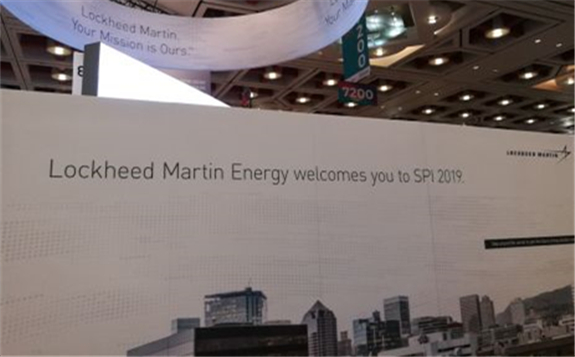While lithium-ion continues to dominate big project announcements worldwide, three providers of long-duration non-lithium battery technologies have claimed various milestones in commercialisation.

Lockheed Martin said this week that the first test of its commercial redox flow battery is underway, while zinc battery company Eos Energy prepares to list on the stock market and aqueous air battery startup Form Energy has reportedly netted US$70 million of investment.
Aerospace and defence giant Lockheed Martin said this week that the “first commercial product variant” of its GridStar Flow long-duration energy storage technology has been deployed for testing at the company’s chemistry lab facilities in Andover, Massachusetts.
The GridStar Flow Serial Number One (S/N01) is a 500kW / 2.5MWh system that can discharge for up to five hours at full discharge power or up to 10 hours at half discharge power. The installation, which the company said will “determine the performance capabilities available to meet customers’ needs for customer-sited, long-duration, large-capacity energy storage systems,” follows the earlier installation of two pre-commercial units and takes learnings from the workings of those systems.
“S/N01 demonstrates GridStar Flow’s unique chemistry and architecture in a commercial system for the first time. This installation marks an important milestone for the program and the initiation of a rigorous test campaign to demonstrate GridStar Flow’s performance, reliability and maintainability for use cases including the effective deployment of clean, renewable energy,” programme director Tom Jarvi said.
While the technology has been under wraps and expected to emerge for series production for some time, the coordination chemistry flow battery (CCFB) was expected to go for full launch during 2020, although the company has always said it would keep timelines flexible.
Lockheed claims the battery uses earth-abundant materials and is designed for six hours or more of flexible discharge. As with other flow batteries, one of its perceived advantages over lithium-ion is that it can operate at 100% depth of discharge with minimal degradation over an expected lifetime of 20 years.
In a 2019 interview with Energy-Storage.news, Lockheed Martin’s VP for business development Dan Norton said that testing and development programmes were going “swimmingly and as planned,” with Norton claiming that producing what could be considered an energy security asset was “the next logical progression” for Lockheed Martin. The company has been producing lithium-based GridStar units for some time and had already deployed more than 100 units in North America before the end of 2019.
Zinc battery company Eos lists on Nasdaq today
Meanwhile, Eos Energy Storage, which produces zinc aqueous hybrid cathode battery storage systems, prepares to list on the Nasdaq Capital market this week.
A proposed merger with special purpose acquisition company B. Riley Principal Merger Corp has now been completed, forming Eos Energy Enterprises Inc, which is claimed to have a projected pro forma market capitalisation of around US$500 million. The intention to go public was announced by Eos in June.
The combined entity prepares to list under the ticker symbols EOSE and EOSEW and trading will begin today, 17 November. Eos Energy Storage CEO Joe Mastrangelo becomes the CEO of the combined company.
The rest of the board is made up of Eos and B Riley executives alongside a handful of notable industry names including Dr Krishna Singh, founder of nuclear company Holtec International - with which Eos has had a manufacturing joint venture in place since 2019 called Hi-Power - former General Electric (GE) Global Growth Organisation CEO and president Alex Dimitrief and industry and tech veteran Audrey Zibelman, who was recently overseeing the Australian Energy Market Operator (AEMO) but has resigned to join Google X.
After several years of working to commercialise the technology, Eos has announced various deals and agreements for projects around the world, most recently including a >1GWh agreement with renewables developer Hecate Energy for projects in the US.
Form Energy nets US$70 million investment - report
Form Energy, a battery startup claiming its aqueous air battery can store energy for as much as 150 hours, has closed Series C funding of more than US$70 million.
Company CEO and co-founder Matteo Jaramillo had told the agency late last week of the funding, which brings total funds raised by Form Energy to more than US$120 million when added to other funding including US$40 million raised in a Series B round that closed in August 2019. Jaramillo has not said who the investors are in the Series C but apparently said details will be released in a couple of weeks’ time.
In May, Energy-Storage.news reported that Minnesota electric utility Great River Energy will be piloting the use of a 1MW Form Energy battery system. Among Jaramillo’s co-founders is noted battery expert Yet Ming-Chiang and, in line with its aim of providing low-cost bulk storage, the company was previously known as Baseload Renewables.
Form Energy has been working on two types of long-duration battery since 2017: an aqueous sulfur flow battery and the aqueous air device. According to Form, the latter “leverages some of the safest, cheapest, most abundant materials on the planet".
This article is reproduced at www.energy-storage.news